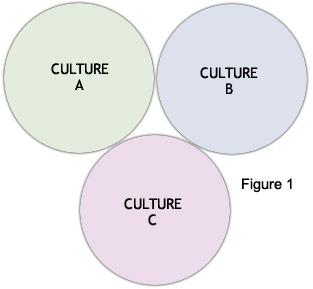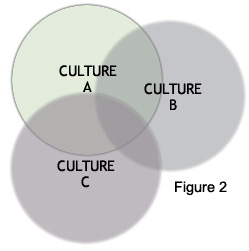
The most significant difference is the reality that the units of study, the teaching/learning materials, and the content are usually developed from within the locality, nation, or culture. Children in Canada often learn about Peru from content developed by Canadians unfamiliar with Peru. Though well meaning, in some cases, this content is biased, in others it is even fallacious.
Figure 1 attempts to illustrate current curriculum practise. Each culture designs its own curriculum and presents learners with an awareness of the others that comes complete with a cultural bias. For example, Muslim children learn about America from a Muslim point of view. English children learn about the Amazon Rain Forest from a position that often does not take into account the real issues facing Brazilians every day. This, unfortunately remains a Curriculum For Segregation, mitigated only by the liberality and understanding of those who develop and implement each curriculum.

